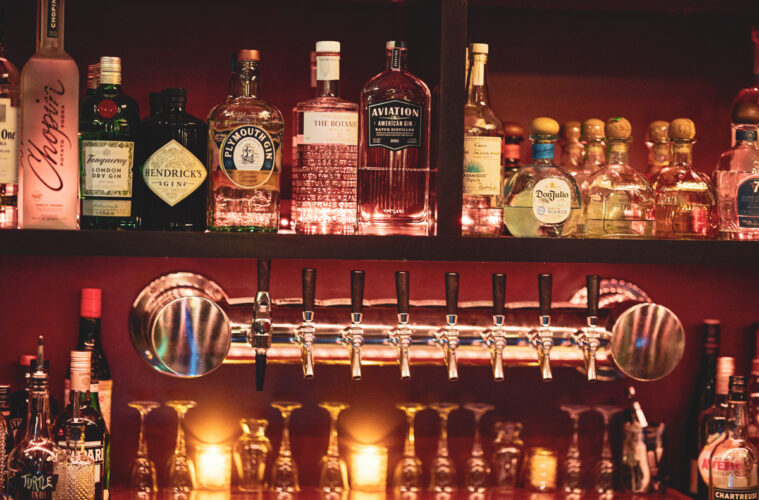I watched a couple slip down a neat alleyway alongside a white fence and decided to follow them, at a distance of course. I was on a mission on behalf of Northshore readers to investigate a speakeasy, The Hidden Door, that had appeared mysteriously on social media a few months back, with dark, moody pictures of alluring cocktails and no address. Anywhere.
By the time I turned the corner, they had vanished! I spied a pair of sad plastic patio chairs and a matching table. They were not giving off trendy cocktail bar vibes, but lights were on in a vestibule at the end of the walk.
Peering through the glass door, I made out a title tucked among burnished old tomes on a bookshelf inside. It was Imbibe, David Wondrich’s essential guide to classic American cocktails, leaning against a copy of “The Hobbit.” Could this be a clue?
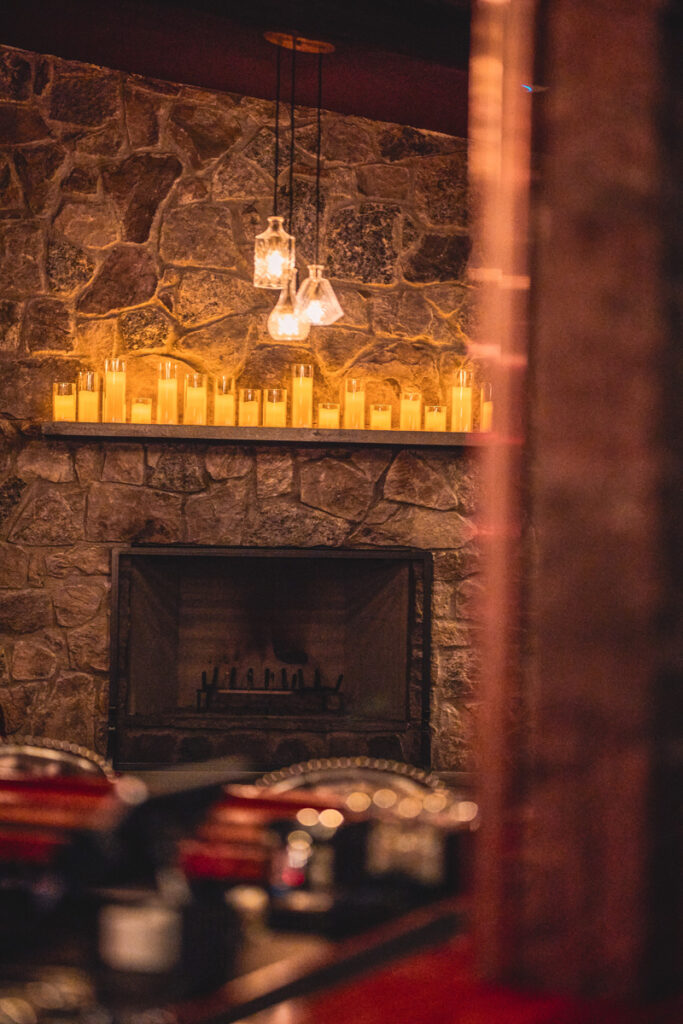
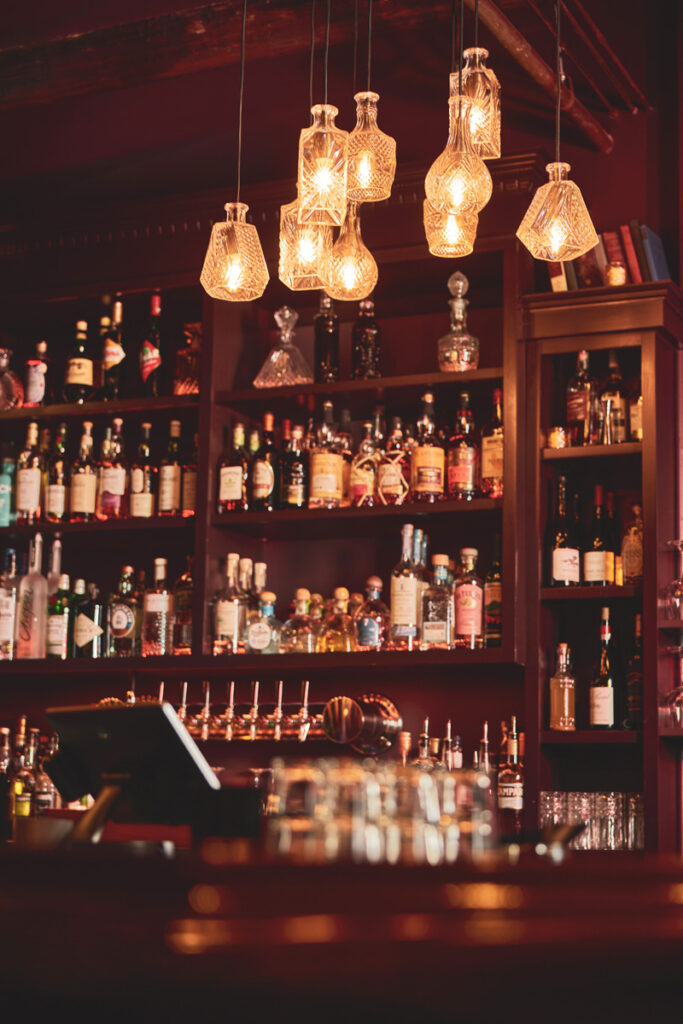
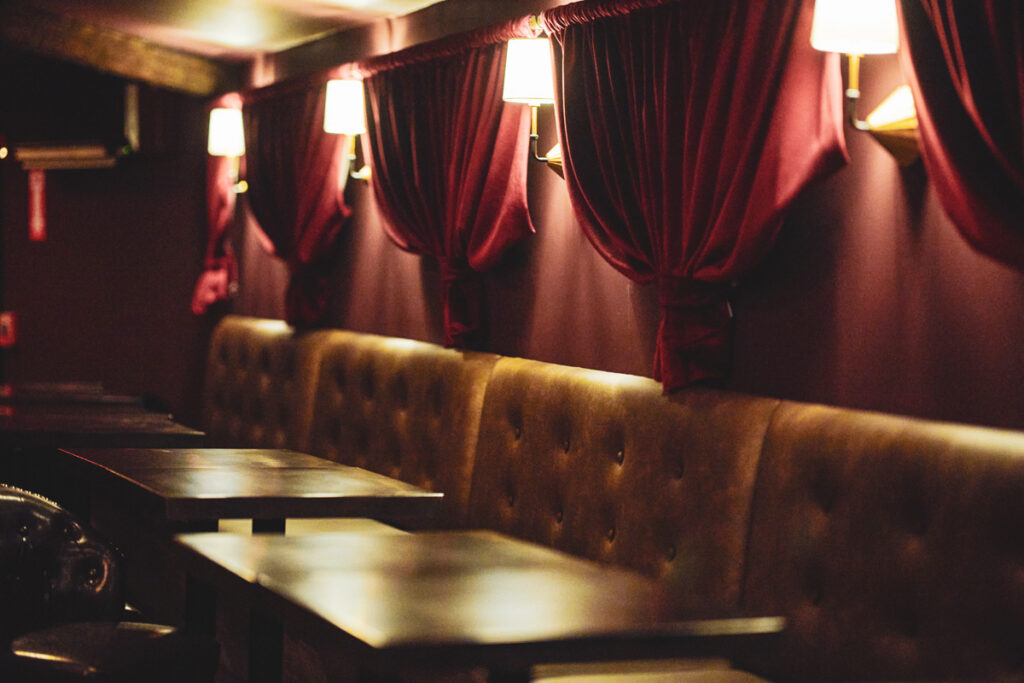
Stepping into the entryway for a closer look, I noticed a handle tucked between the shelves. Grasping it, I pushed the bookshelf open, and entered a dimly lit space. Has it always been here, a timeless place tucked away, like Harry Potter’s Cupboard Under the Stairs, waiting to be discovered? Or did it just open late last year, after an extensive and thoughtful renovation of an abandoned restaurant space? That is yours to decide.
Proprietors Victoria and Todd Horvath very graciously agreed to share the story of how they became operators of a secret speakeasy, but they did lay down a few ground rules, the first of which was that Northshore would not publish the address. Perhaps intrepid socialites can extract clues from my tale and find their way.
The idea for a speakeasy was a solution to an unusual problem. “The downside of our location is that it’s impossible to find, and there’s no street entrance,” Todd says. After some thought, the couple realized the best plan might be to turn that difficulty into an asset. “What if we make that [the concept], that it’s sort of tricky to find?”
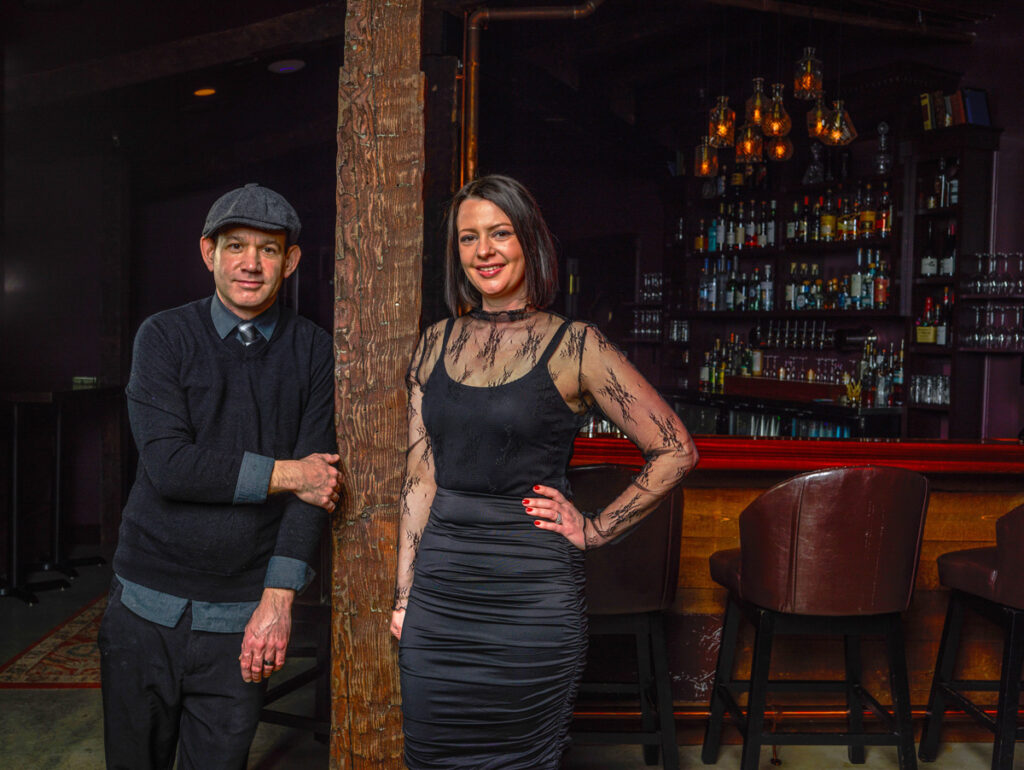
Insiders delight in inviting their friends—sometimes even sharing their coordinates—and waiting for them to find The Hidden Door. But it’s not as underground as you might imagine—if you find yourself wandering past dumpsters to an unmarked black door with nary a bookshelf in sight, that is not the way in. Yet desperate drinkers have bravely found their way to that service entrance. “You have to walk down alleys, through a parking lot, and past dumpsters to get to the back door,” Todd says, and parties of four have run that gauntlet, even walking in and sitting at the bar after hours while the staff is cleaning.
Don’t do that. Instead, pay attention, and you’ll find your way. Really. “There are no secrets in Marblehead,” as Victoria points out. These days, on a Friday or Saturday night, guests might be lined up outside the 53-occupant (not including staff) space. Which is another clue—because how many places in Marblehead attract mysterious lines at night? Especially jovial lines you might feel compelled to join. Don’t worry: When there’s a queue, it’s pretty congenial for the most part, although some early revelers stole books from the secret shelf, so now they are glued down. The weekend doorman misses plucking a book from the shelf during slow times, but he is still happy to spill advice for avoiding the line.
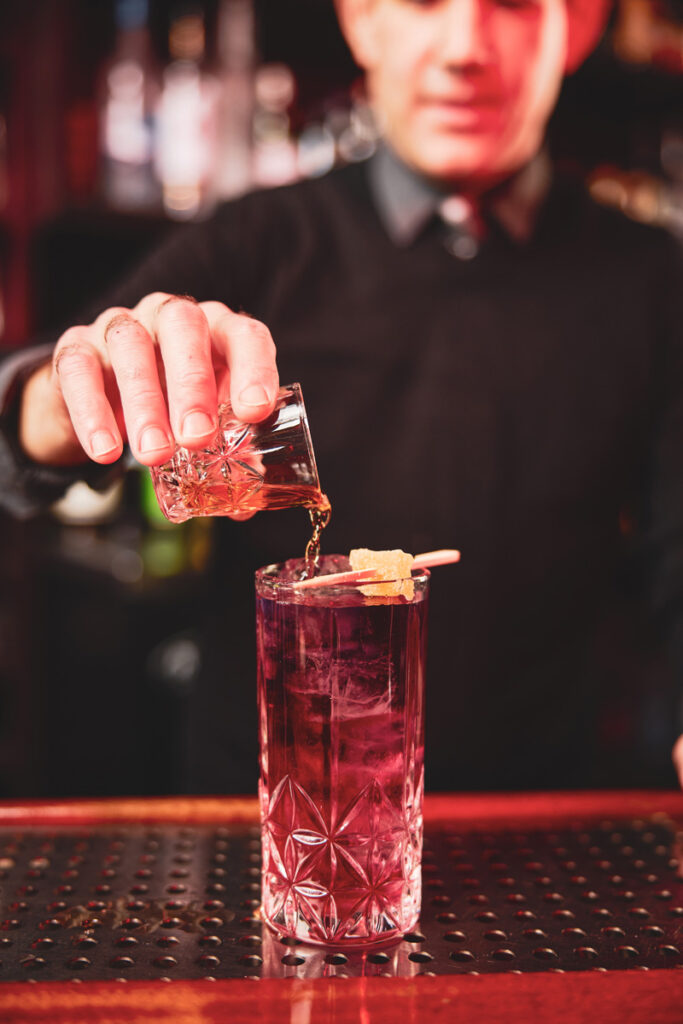
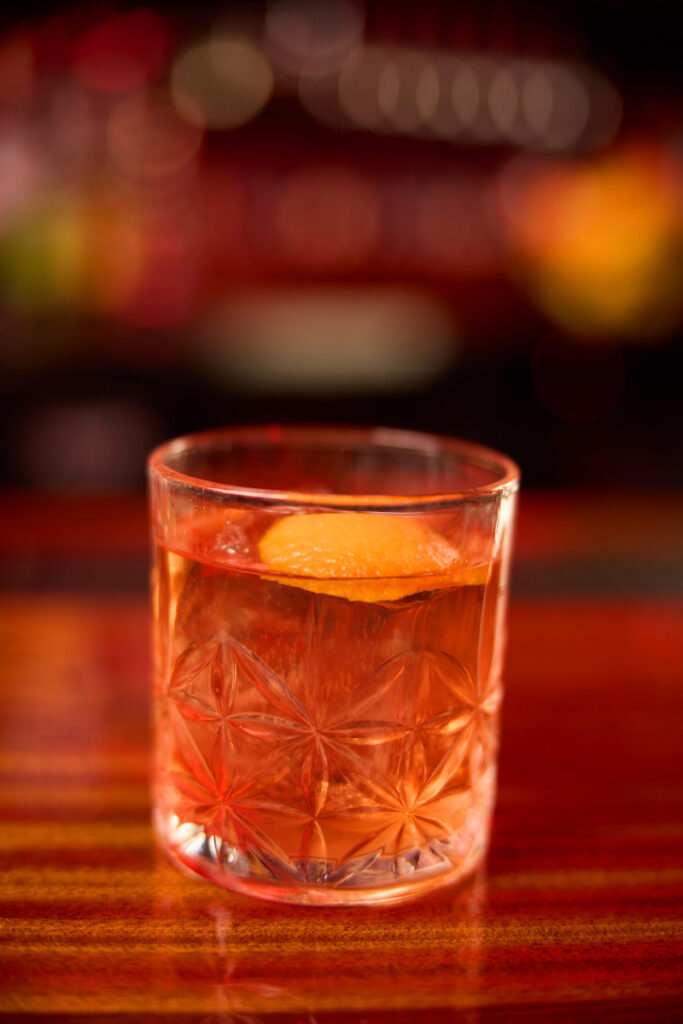
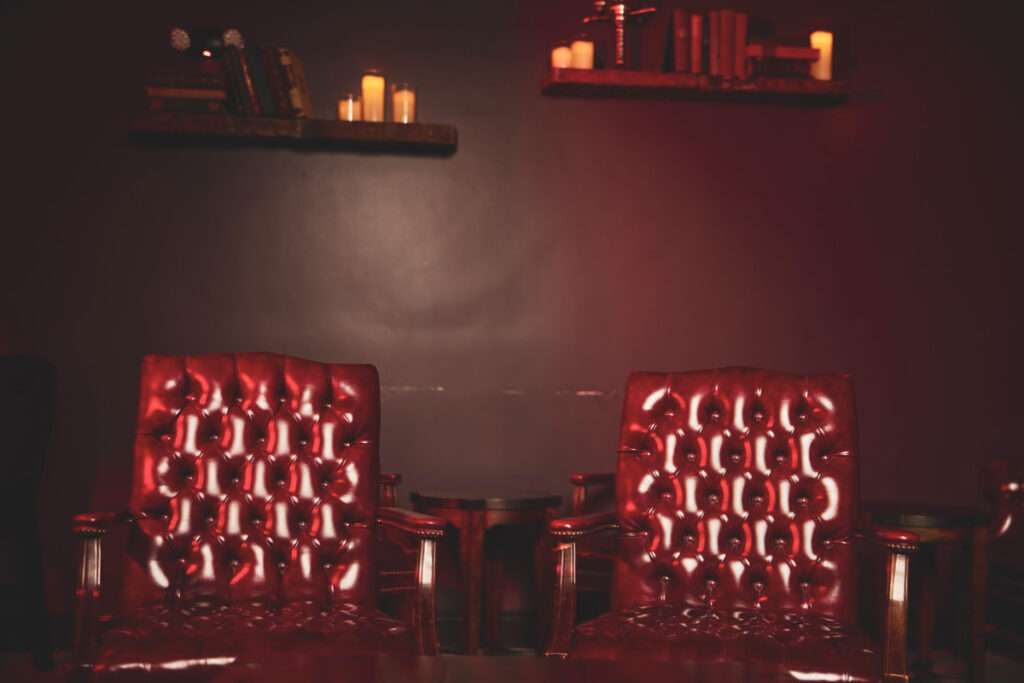
One mysterious fact—arriving early may not help. As the opposite of most trendy spots, The Hidden Door can be at capacity shortly after opening at 5. For a chill experience, plan your visit for a Wednesday night, when the doorman is seldom needed and live music—in the form of a jazz trio or other conversation-conducive band—entertains. Livewires should show up after 10 on the weekend, where you just might run into the chef from your favorite restaurant. The late hours at The Hidden Door have made it an industry hang after the other eateries shutter for the night.
The welcoming interior offers several different seating options, from plush leather chairs for tête-à-têtes to convivial bar stools. Victoria crafted the quirky space to include many different textures: dark wood, velvet curtains, oriental rugs, and beams that were exposed following removal of some neon-yellow plaster (a clue for longtime residents, perhaps?).
While the vibe changes depending upon the night and the crowd, the menu of cocktails does not. Todd, who has worked in a number of bars in town, drew from the recipes of some of the best cocktail bars in the country when building the list. To ensure quality, all the juices and syrups are freshly made in-house, and many drinks are intricate. Take the Benton’s Old Fashioned for example—the components take seven hours to prepare, starting with slow-cooking smoky Benton’s bacon to render the fat, then mixing that fat with bourbon, and eventually straining it out.
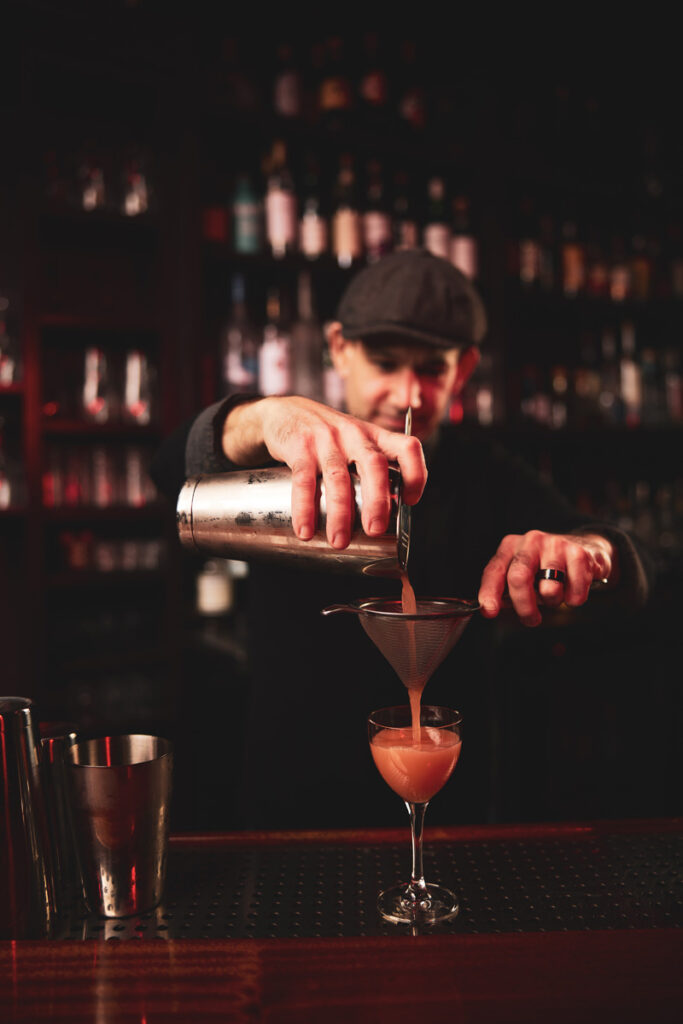
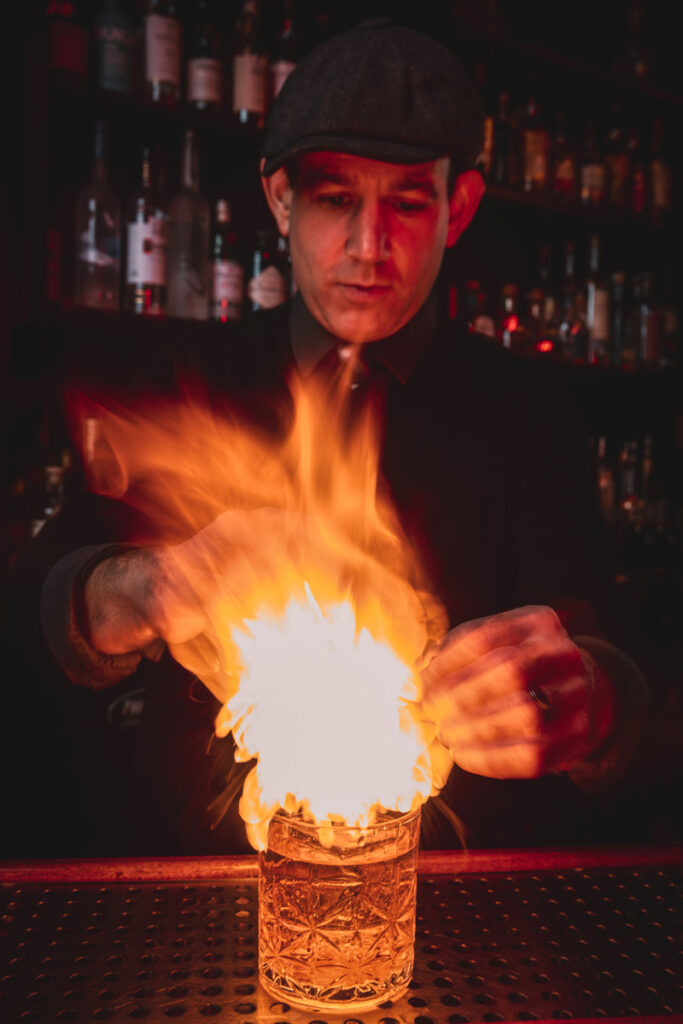
“I just want to make complex and interesting drinks for the people in my community,” Todd says, adding that the zero-proof options are not an afterthought. “We’re taking the mocktail list almost as seriously as the cocktail list,” he explains. “We want it to be interesting and unique, to offer people who aren’t drinking something cool.”
There is a noshing menu to accompany the drinks—the meatball dish and the baked brie are both recipes that Victoria has been perfecting for a long time. “When I was creating the menu, I envisioned what I would serve if we were having a cocktail party—it would be a bunch of appetizers,” she says. One side of the menu, turned out from a tiny kitchen, has savory items, while the other side offers sweet endings, so you can close the place with an affogato or finish the night with a negroni sorbet.
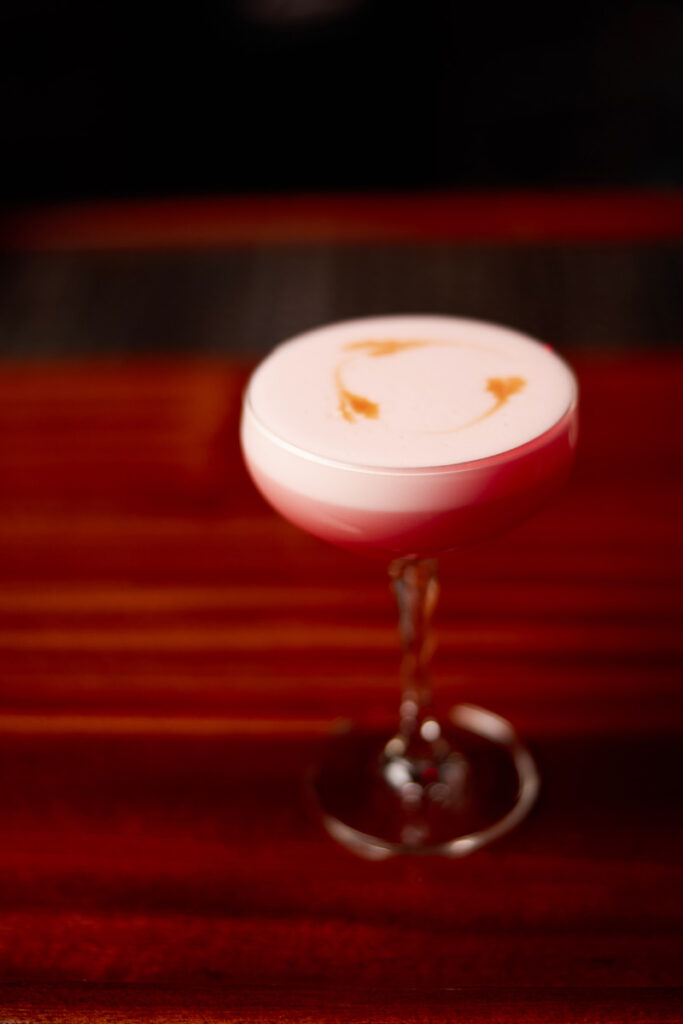
Don’t expect the menu to get any bigger, and don’t expect any TVs—the couple wants to remain a cocktail bar, even though that’s very different from the tried-and-true formulas in town. “It was super scary but we just leaned into our decisions,” Todd says. “We didn’t try to be everything for everyone.”
The instant popularity has caught the couple a bit off guard, but the Horvaths are hoping that guests will eventually settle into The Hidden Door as a spot to leave screens behind and connect.
“I want to be a place where you can feel comfortable whether you get a complicated cocktail or a Budweiser,” Todd says. “That was the main objective—to create a third place where people can get together and not stare at their phones.”

